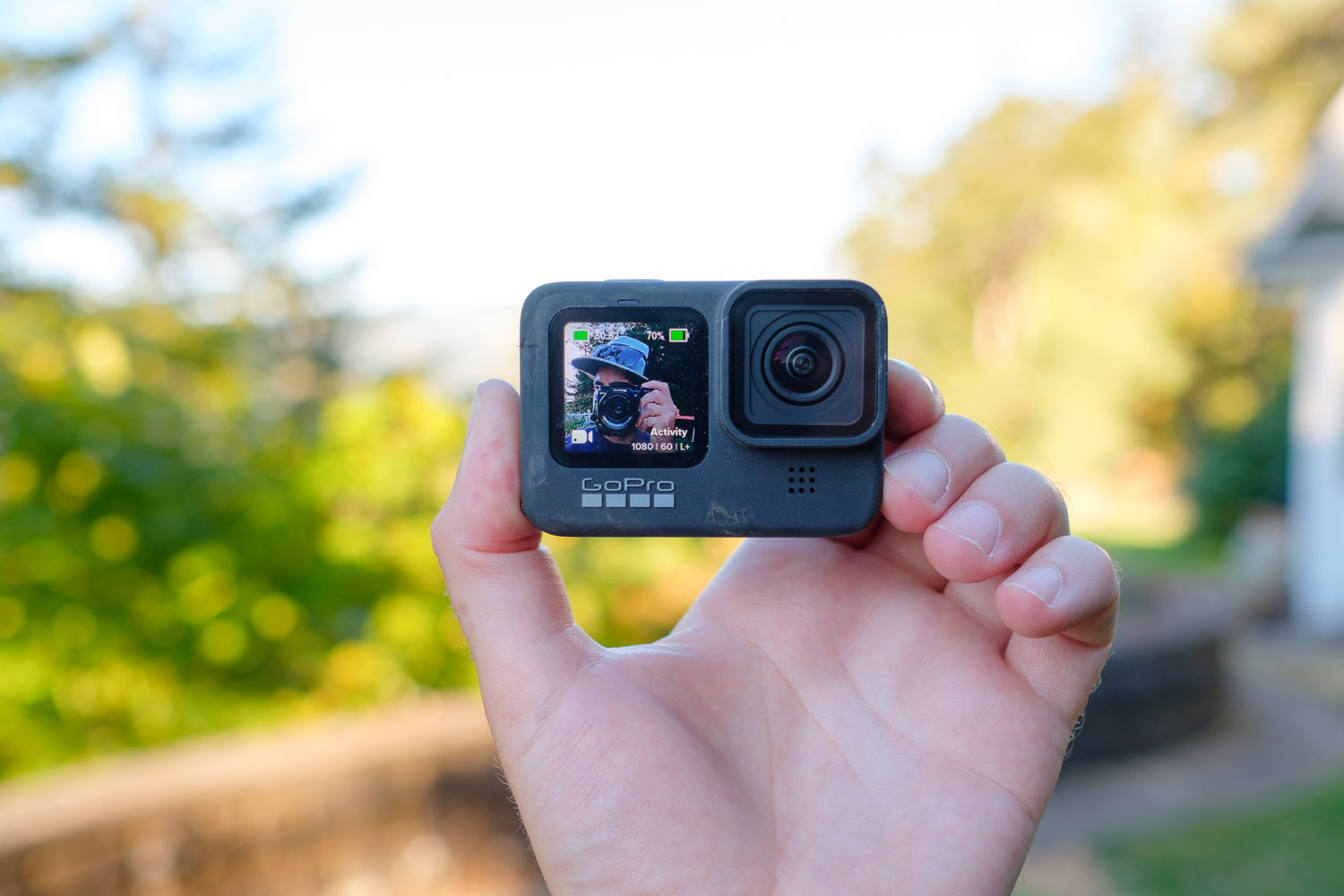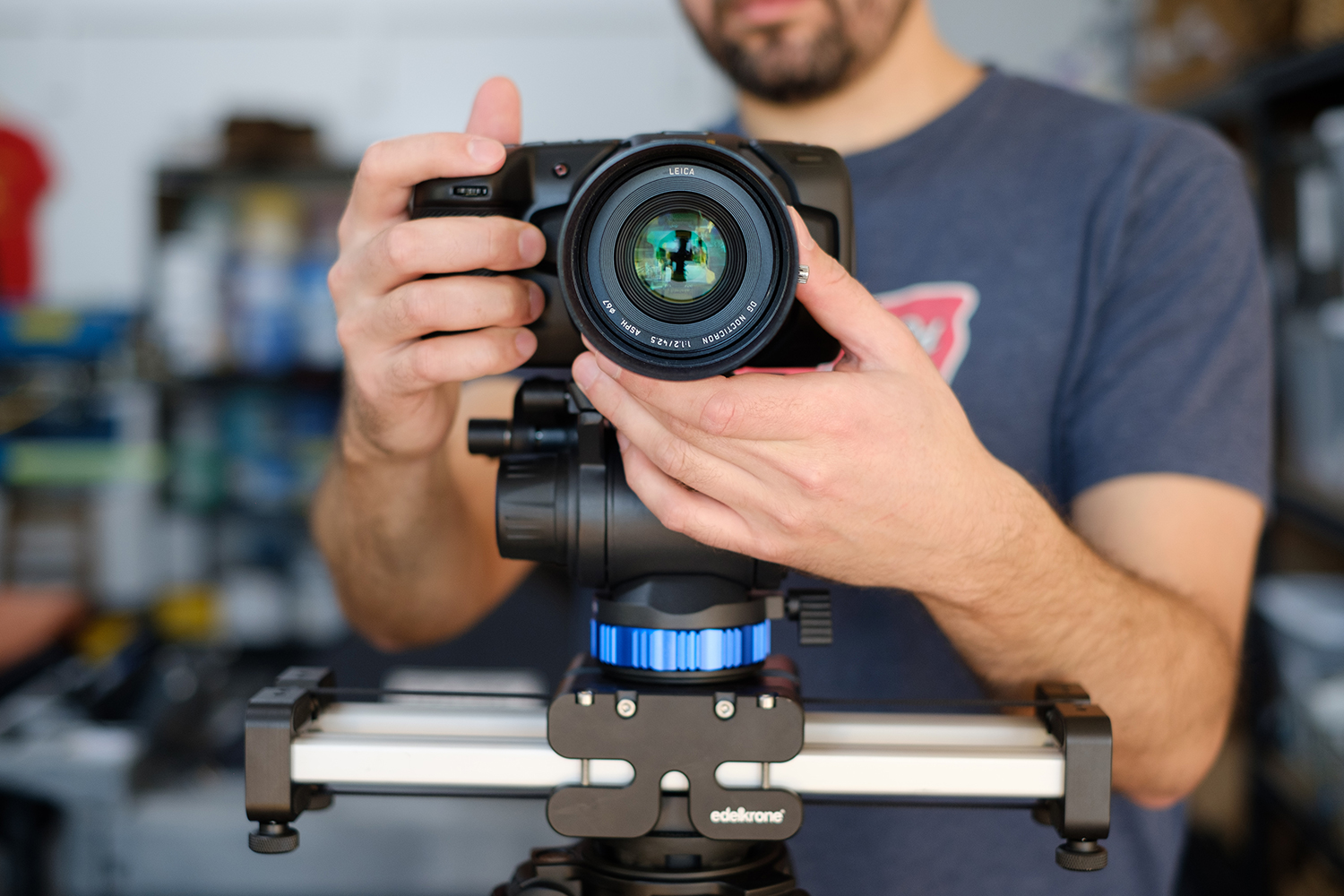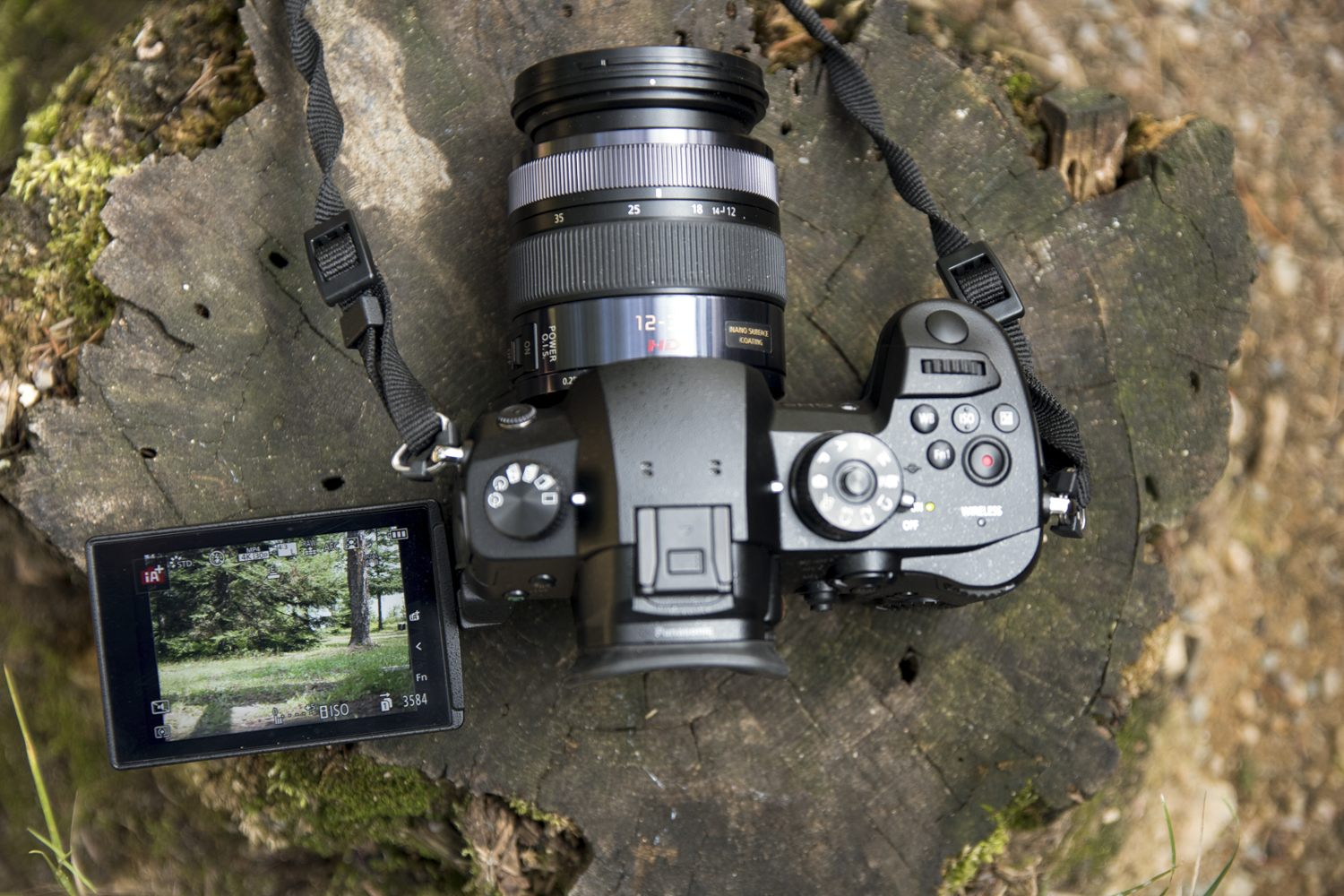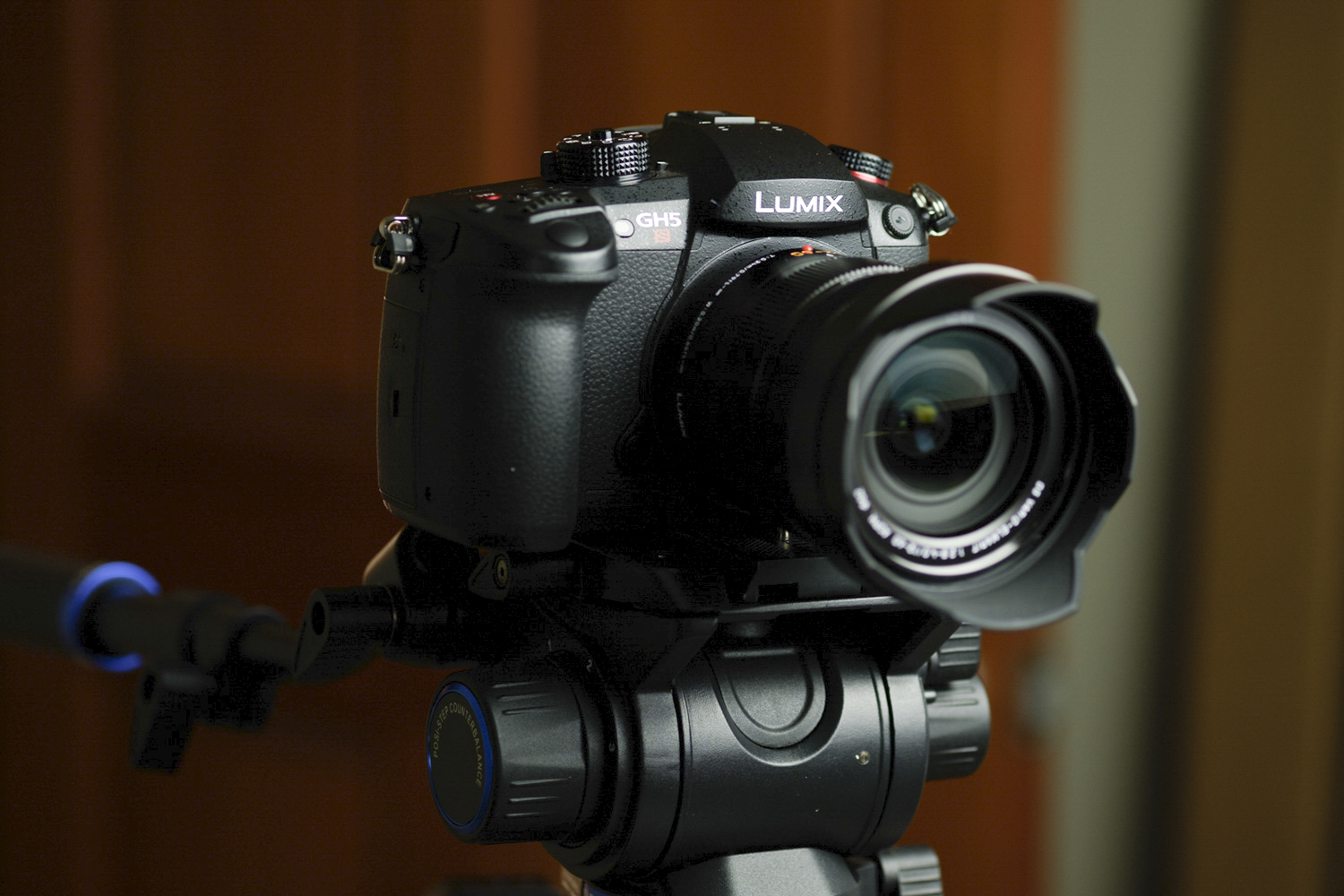YouTube counts as much as one third of the internet as its audience. With so many viewers, starting a YouTube channel can be a great way to build your own audience, but it’s going to take some work to stand out from all the other channels. A good place to start is with a camera upgrade.
While it’s not the best video camera outright, I still think the Sony A6600 is the best camera for YouTube. It offers good 4K video with plenty of control and features, combined with an ease of use that makes it ideal for the one-person crew. Much of that is thanks to the best-in class eye-tracking autofocus that ensures the camera stays locked on you and doesn’t drift to the background, your dog, or anything else that may be in the frame.
The A6600 doesn’t technically offer the best video quality, nor is it the cheapest or smallest option. If these things are of concern, there’s a better camera out there for you. And as virtually any camera can work for YouTube — including your phone — you shouldn’t pay more than the needs of your channel demand.
At a glance:
- Best overall: Sony A6600
- Best pro camera for YouTube: Panasonic Lumix GH5/GH5S
- Best compact camera for YouTube: GoPro Hero9 Black
- Best camera for YouTube livestreaming: Blackmagic Design PCC4K
- Best camera for YouTube vlogging: Sony ZV-1
The best: Sony A6600

Why should you buy this: Best-in-class eye-tracking autofocus.
Who’s it for: Talent-operators and other one-person crews who need a camera they can rely on, even if they can’t monitor it.
Why we picked the Sony A6600:
The Sony A6600 isn’t the best video camera outright, but it has everything most YouTubers need. For vloggers and other one-person crews, it’s hard to beat its ease of use.
While it’s is a relatively small and iterative step forward from the A6500, that’s just proof of how dialed-in Sony’s mirrorless cameras are. The A6600 offers a wealth of features for both the still photographer and videographer, but of note for YouTubers are the 180-degree flip screen, microphone and headphone jacks, 5-axis stabilization, and excellent eye-detection autofocus.
It’s that last feature that sets the A6600 apart. Sony’s Real-Time Eye AF, one of the few new features of the A6600, is the best autofocus system of its type that we’ve tested, and removes one of the biggest pain points for creators who have to be both camera operator and talent. With Real-Time Eye AF, you can simply turn it on and forget about it, trusting the camera to keep you in focus as you move about the frame.
It also shoots oversampled 4K video from its APS-C sensor for detail-rich output and includes a host of advanced video settings, most notably Sony’s S-Log color profiles. These flat profiles preserve more dynamic range but will require color correction in post to make them look normal again. Not every YouTuber will need this feature, but more experienced shooters looking for that edge in image quality will appreciate having it.
The biggest downside of the A6600 is that, for all the advanced options it offers, it still falls behind the competition in pure video quality. It records 4K only in 8-bit, whereas cameras like the Panasonic Lumix GH5 and Fujifilm X-T3 offer 10-bit recording. Its older sensor is also prone to “jello cam,” a type of wobbly distortion that occurs when the camera (or subject) moves too quickly. For any locked-down shots, this shouldn’t be a problem, but it may affect the ever-popular walk-and-talk shot.
Still, the Sony A6600 remains a balanced camera that’s affordably priced and packs a lot of features into a small body. It’s the best camera for most YouTube creators.
Read our Sony A6600 review
The best pro video camera for YouTube: Panasonic Lumix GH5/GH5s
Why should you buy this: High-quality video filetypes and unlimited recording.
Who’s it for: Experienced videographers who want great quality and ultimate control.
Why we picked the Panasonic Lumix GH5:
This camera has been going strong for over 3 years and remains one of the most capable video cameras today. The first mirrorless camera to shoot 4K at 60 frames per second, the GH5 is often the easy answer to anyone asking for a good video camera.
It features excellent image quality thanks to 10-bit 4:2:2 recording at up to 400 megabits per second. It also shoots in either DCI 4K (4,096 x 2,160) or Ultra HD (3,840 x 2,160) resolutions.
But the best part about the GH5 as a YouTube camera is this: It puts no limit on the length of clips you can record. Need to go on a long-winded rant or shoot an uninterrupted interview? No problem. Most hybrid cameras — those are still cameras that shoot video — top out at a maximum of 30 minutes, but not so on the GH5.
Like the Sony A6600, the GH5 gives you a fully-articulating monitor, 5-axis sensor-shift stabilization, and microphone and headphone jacks.
It sounds like a winner all around, so why is the GH5 not our first pick? It comes down to autofocus.
Panasonic developed its own focusing technology called Depth from Defocus (DFD) rather than go with the more standard phase-detection autofocus that the A6600 uses. For still photography, DFD is impressively fast and accurate — but it has a problem when it comes to video. Due to how the system works, it continuously makes small back-and-forth adjustments, and these slight changes in focus can show up in your video. It’s not always noticeable, but it can be a big distraction in some situations.
While the GH5 is undoubtedly the better general video camera than the A6600, I have to contend that the Sony is going to be easier to use and more consistent, making it the better choice for most YouTube creators. If you can get by without perfect autofocus, however, the GH5 does have an edge in image quality and greater flexibility for color grading in post, if you don’t mind putting in more work.
You may also want to check out the Lumix GH5S, which uses a lower-resolution, multi-aspect-ratio sensor specifically built for video. The camera sacrifices image stabilization, so you’ll want to keep it on a tripod or gimbal, but if you want the best video quality you can get short of a pro cinema camera, the GH5S is for you. It otherwise offers the same features in an almost identical body to the regular Panasonic Lumix GH5.
Read our Panasonic Lumix GH5 and Lumix GH5S reviews
The best compact camera for YouTube: GoPro Hero9 Black

Why should you buy this: The built-in front-facing screen is perfect for vloggers.
Who’s it for: Vloggers and streamers who need an easy-to-use camera.
Why we picked the GoPro Hero9 Black:
Calling the Hero9 Black an action camera isn’t the most accurate label. Yes, GoPro’s latest flagship is still the best action camera you can buy, but it does much more than provide a point-of-view perspective for extreme athletes. The front-facing screen makes it perfect for vlogging and a redesigned media mod, similar to the one introduced with the Hero8 Black, adds a mini shotgun microphone and two cold shoes for attaching other microphones or lights. If you need to put together a YouTube studio on a budget, the Hero9 makes a great centerpiece.
The Hero9 Black is physically larger than last year’s Hero8, but now features a bigger rear screen and higher-capacity battery. The removable lens cover, a beloved feature of the Hero5 through 7, also returns (although is incompatible with those older cameras). Not only does this make securing ND filters a breeze, but it also opens up support for the new Max Lens Mod, which expands the field of view to 155 degrees and enables 360-degree horizon leveling, meaning the camera can do a barrel role and your footage will remain upright the entire time.
Several software features have also received important updates. HyperSmooth 3.0 provides even better digital image stabilization with in-camera horizon leveling; TimeWarp 3.0 now allows you to slow down to either real time or half speed and records audio during real-time segments; and a number of automation tools allow you to program record starting times and durations.
All of this is to say nothing of the new sensor that shoots 20MP stills and 5K video — the latter of which I found to be little more than a marketing stunt, but, still, it’s the first new sensor in several generations of GoPro cameras. The Hero8 Black remains an excellent camera and is still available, but if you want the latest and greatest, nothing beats the GoPro Hero9 Black.
Read our full GoPro Hero9 Black review
The best camera for YouTube livestreaming: Blackmagic Design Pocket Cinema Camera 4K

Why should you buy this: Beautiful footage, expert camera control for livestreaming with ATEM Mini.
Who’s it for: Streamers, filmmakers, or anyone who wants to turn their home into a production studio.
Why we picked the Blackmagic Design Pocket Cinema Camera 4K:
The Blackmagic Pocket Cinema Camera 4K is your ticket to professional-quality video without blowing all of those oh-so-sweet YouTube ad dollars on a new camera. It’s also fantastic for livestreaming when combined with Blackmagic’s ATEM Mini HDMI switcher, which lets you control virtually all aspects of the camera from your computer, from focus to color correction. Designed for cinema production, you also don’t have to worry about the PCC4K overheating during a long session.
But that’s not the only area where this camera excels. Unlike others on this list, the PCC4K can shoot either Blackmagic RAW or Apple ProRes filetypes internally. With up to 12:1 compression, Blackmagic RAW offers the best quality-to-file-size ratio of any video codec, while ProRes provides edit-friendly files that you can drop onto a timeline and immediately begin to cut. Both are going to provide better quality than what you can get with other cameras, especially in this price range, giving the PCC4K a pretty significant image quality edge for creators who don’t mind putting in a bit of extra effort.
Now, given how affordable the PCC4K is, it would be easy for anyone to assume it’s the best choice and go out and buy one — but beware. While this is certainly a capable camera, it lacks many quality-of-life features that are present in most mirrorless cameras. Autofocus is basically non-existent (hence why you’ll want a dedicated camera operator), and battery life is quite poor, getting you around 25 minutes of record time.
But the Blackmagic Design Pocket Cinema Camera 4K is merely the centerpiece of a larger production rig. It’s designed to integrate with external batteries, follow focus systems, monitors, and everything else you need to turn it into a professional filmmaking tool. Sure, that’s overkill for many YouTubers, but given that the most popular channels are shooting on the likes of Red digital cinema cameras, the PCC4K is a great way to give your channel the professional look even if you don’t have the MKBHD budget.
Read our Blackmagic Design Pocket Cinema Camera 4K review
Best camera for YouTube vlogging: Sony ZV-1

Why should you buy this: Several features are purpose-built for the vlogger.
Who’s it for: Creators who need professional image quality in a camera that just works.
Why we picked the Sony ZV-1:
This offshoot of Sony’s popular RX100 line was built specifically with vloggers and YouTubers in mind. It features an upgraded, three-capsule microphone and includes a wind sock to help with recording higher audio quality outdoors. The RX100’s pop-up flash and viewfinder have vanished, but the new microphone as well as the vari-angle screen that flips out to the side are more useful for video.
Internally, the ZV-1 has the same 20-megapixel 1-inch-type sensor as the RX100 VII, which was our pick for the best point-and-shoot camera. However, rather than use the 24-200mm f/2.8-4.5 (full-frame equivalent) lens of the RX100 VII, Sony opted for the shorter 24-70mm f/1.8-2.8 lens of older RX100 cameras. This has a number of advantages for video, starting with the wider aperture that allows for a shallower depth of field for blurring out backgrounds. This lens also incorporates a built-in neutral density filter which helps when shooting in bright light by acting like sunglasses for your camera. This allows for a slower shutter speed, keeping footage smooth and natural.
Sony also built several features into the ZV-1 designed specifically for the modern content creator who may not be an experienced videographer. This includes a Background Defocus mode that automatically selects the widest aperture when enabled, and a Product Highlight mode that tunes the autofocus to quickly transition from the presenter’s face to a product held in front of them, snapping back to the face when the product is lowered from view. It can also be used as a USB webcam with the need for a driver, great for livestreaming and videoconferencing.
While Digital Trends hasn’t tested the Sony ZV-1 yet, it is already popular with the numerous vloggers who had their hands on it prior to launch. Combined with our experience with Sony’s RX100 series, we feel confident in recommending this camera — but there’s a catch. Panasonic recently introduced the Lumix G100 (also not tested), a vlogging camera with a larger Micro Four Thirds sensor and interchangeable lenses. That alone won’t make it better than the ZV-1 for vloggers, but it looks to be a strong alternative, especially considering the similar pricing.
Can’t find what you’re looking for? Check out our collection of the best Black Friday camera deals we found.





